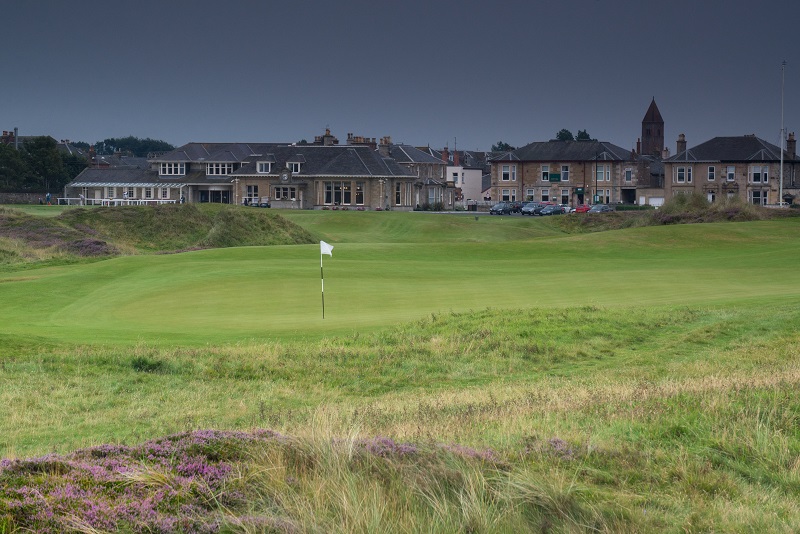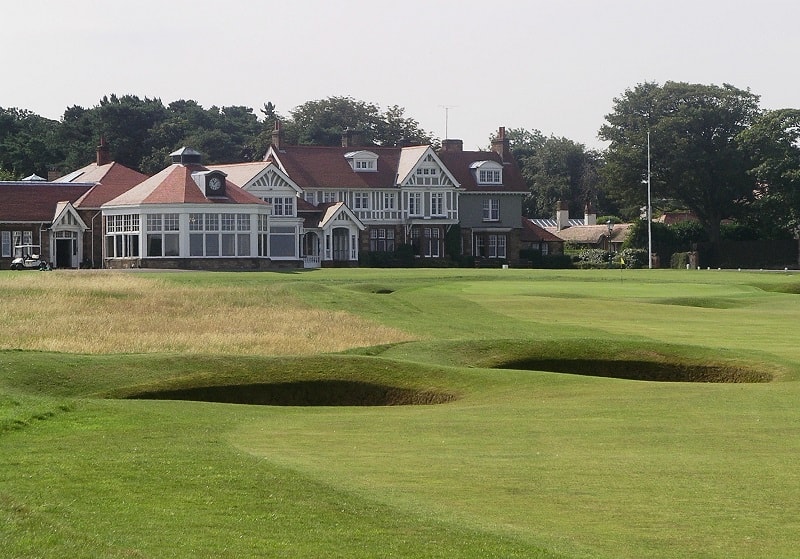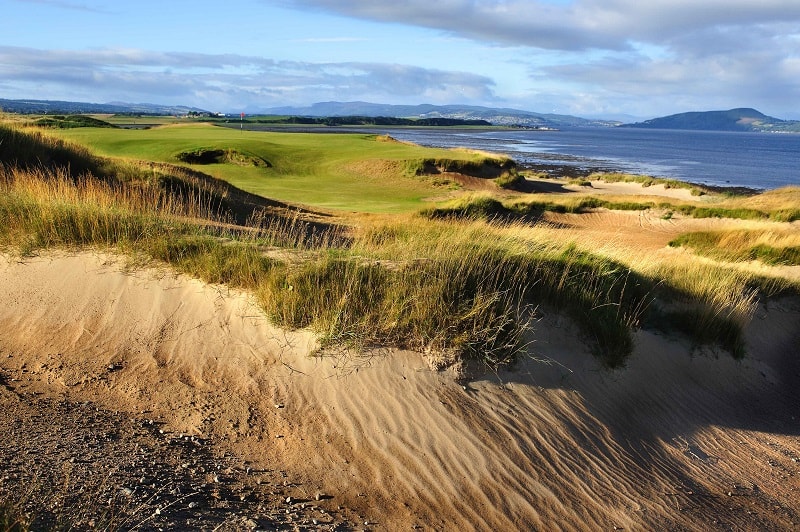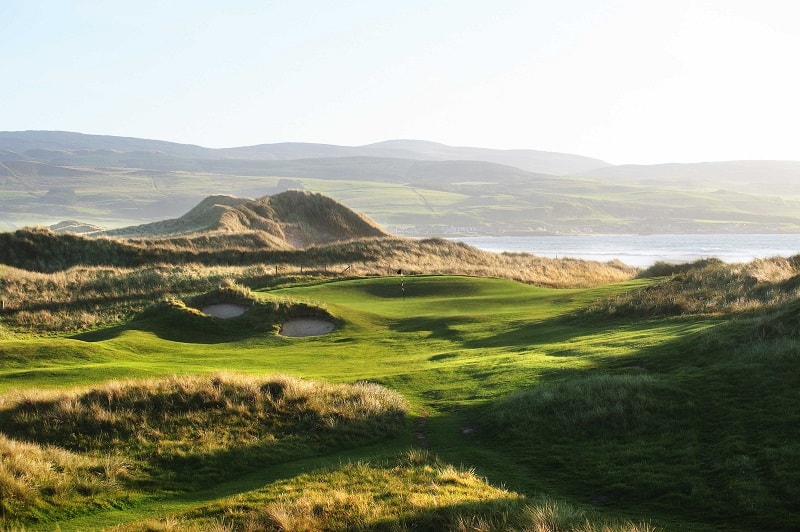From dramatic links courses steeped in history, to hidden gems and some new layouts, Scotland may just have everything a true golf lover could wish for, says ANDREW MARSHALL.
Golf comes in no greater dramatic abundance than in Scotland – the Home of Golf. This is where the great game started and everyone wants to experience the difficulties and delights of Scottish golf, especially the links.
All the key ingredients are here - towering dunes, elevated greens, blind shots, deep pot bunkers, tumbling fairways, slick putting surfaces, howling winds and the taste of salt in the sea air. Some courses are old classics laid out by legendary designers such as Old Tom Morris and James Braid, whilst others are recent creations that still look as though they have been part of the landscape for centuries. Here’s a selection of top-quality links throughout different regions of Scotland:
AYRSHIRE
Turnberry: The venue for the British Open Championship 2009 came to international prominence with the infamous ‘Duel in the Sun’ between Tom Watson (champion) and Jack Nicklaus over four sweltering days during July 1977. Since then, Greg Norman (86), Nick Price (94) and most recently Stewart Cink (09) (when Tom Watson narrowly missed out to become the oldest winner in history) have made up the quartet of golfers to lift the Claret Jug, and polls now regularly acknowledge the Ailsa course as one of Britain's top three courses with regular rankings within the world's top 20. The ninth (Bruce’s Castle) is a contender for Turnberry's trademark hole. Adjacent to the famous lighthouse and the remains of Robert the Bruce’s Castle (Scottish King from 1306-1329), this 452-yard par-4 has no bunkers, yet is a daunting par-4 especially from the Championship tee which is perched on a rocky premonitory on the edge of the sea.
Prestwick: It is The Birthplace of the Open and it promises one of the most captivating rounds of golf you will ever play. It may be considered too short to accommodate the demands of today’s Open Championship, but that just makes it all the more playable for golfers everywhere... especially with its eclectic qualities which have stood the test of time and make Prestwick a ‘must play’ links. Here golfers will encounter vast swathes of bunkering, some with railway sleepered sides and steps to reach the bottom. There are blind shots which defy belief – the par three 5th is called Himalayas and the approach to the 17th is glorious fun, especially with the beach of a bunker short of the green.

Pic: Prestwick GC, C/O Kevin Markham.
Other golfing options: Royal Troon, Western Gailes.
EDINBURGH/EAST LOTHIAN
Muirfield: Home to the Honourable Company of Edinburgh Golfers and most recently the 2002 Open Championship this very exclusive seaside links course features long narrow fairways, fast undulating greens, innumerable pot bunkers and thick rough. Architecturally it’s a gem. A clockwise outward half surrounds the inner anti-clockwise holes, an arrangement that ensures that players have to make incessant adjustment for wind direction.

It can be quite tricky securing a tee time at Muirfield and currently, visitors may play on Tuesday and Thursday mornings with the 1st tee reserved for two-balls and the 10th tee reserved for fourballs. Times fill up very quickly during the peak season from May to September, but the good news is Muirfield has ideal full course playing conditions all year round.
Other golfing options: North Berwick, Gullane No.1.
FIFE
Kingsbarns Golf Links: Designed by leading golf architect Kyle Phillips, Kingsbarns is a tribute to classic Scottish links and has come on in leaps and bounds since opening in 2000. The course meanders along more than one-and-a-half miles of rugged seashore offering ocean views from every hole. Featuring spacious fairways rolling and twisting through dune ridges and hollows, true links turf and large greens, the course is challenging yet playable. “At Kingsbarns it’s all about risk and reward,” says David Scott, Director of Golf. “You can play to a safe area but it’s likely to be a tough angle to the green. If you take a gamble and go the Tiger line, you will have the choice of playing a running shot or one through the air.”

Other golfing options: St Andrews Old Course, Castle Course, Duke’s Course, Kittock’s Course, Torrance Course & Balcomie Links (Crail).
EAST COAST / Carnoustie Country
Carnoustie Golf Links: There’s nothing to match the experience of playing one of the most famous and challenging courses in world golf and the finishing hole with the clubhouse in the background is a highlight. A scene of major drama in the 99 and 07 British Opens, this 510-yard par-4 will play as a par-5 for the majority of golfers even from the front markers. Faced with a tee shot most likely into the wind, you must negotiate the notorious Barry Burn that winds across the fairway like an agitated snake. A five is good here and a six would have won Jean Van de Velde the 1999 Open. Originally laid out in 1840 by Allan Robertson, with major changes being introduced later by Old Tom Morris and James Braid.
Other golfing options: Royal Aberdeen, Murcar Links, Cruden Bay.
HIGHLANDS
Royal Dornoch: Golf was first played here at least as far back as 1616 when the Earl of Sutherland ordered clubs and balls to take up the game that was becoming so popular further south. This makes Royal Dornoch the third oldest golfing community in Scotland.
“After the second hole, you round a corner, pass a hedge and golfing heaven breaks loose.” These words on the club’s website are temptation enough, but once you go around the said corner, everything about this world top 20 course is right in front of you. Framed between the hills and mountains to the left and the wild North Sea is a rich tapestry of undulating fairways and plateau greens interspersed with flowering yellow gorse. Magical stuff.
Castle Stuart Golf Links: The brainchild of Mark Parsinen, the American who gifted the world Kingsbarns, this new championship links course overlooks the Moray Firth and well-known landmarks that are synonymous with Inverness – the Kessock Bridge, Chanonry Lighthouse, Fort George and Castle Stuart itself - and enjoys similar topography to Royal Dornoch further north, with an old sea cliff creating two tiered plateaus with six holes running alongside the inner Moray Firth. The course has been designed with wide fairways to offer plenty of lines of play on ground that is perfect for links golf.

The great thing about Castle Stuart is that you get a real sense of seclusion and most of the time you are not aware of other golfers out on the course. The views all around are fabulous, and from some tees and greens, the 1930s style white ’Art Deco’ clubhouse can be seen sitting prominently atop its viewing perch. Castle Stuart Golf Links is destined to become a future classic.
Other golfing options: Nairn, Brora & Tain
KINTYRE PENINSULA

Machrihanish Old: It’s a claim that’s often made – ‘Machrihanish Old’ situated miles from anywhere on the craggy west coast of the Kintyre Peninsula has the best opening hole in Scottish golf. With the Atlantic Ocean pounding away to the left, ever-present cross winds and a long beach carry, the 436-yard par-4 is certainly a nerve-jangling start to any round.
Four-time British Open champion Old Tom Morris described the quirky dune land of Machrihanish as ”Created by the Almighty to play golf on” and little has changed since he marked out his traditional links using seagull feathers during one weekend in 1876. Although it’s a devil to get to, it’s surprising how many golfers find there way to Machrihanish, and professional golfer Brad Faxon, who’s passionate about golf course design once drove the 189 miles from Turnberry to Machrihanish, just to check it out and play a round during the build-up to the Open.
Other golfing options: Machrihanish Dunes & Dunaverty Golf Club
SCOTTISH ISLANDS (Inner & Outer Hebrides)
Askernish Old: If Machrihanish is remote, then Askernish Old on the Outer Hebridean island of Uist is at the end of the world. First laid out by Old Tom Morris in 1891, in recent years it has been unearthed and restored to its former glory by Gordon Irvine (Master Greensman) and Martin Ebert (Canadian course architect) using entirely traditional design principles. Enviromental experts have already hailed Askernish Old as "the most natural links course in the world": the dunes' natural contours form the fairways, no artificial chemicals are used in maintenance, and during winter months sheep and cattle graze the course.
Irvine, who worked for free on the project, believes that based on his ability to distinguish natural landforms from man-made ones, he has correctly exposed and re-created the original layout. “We’ll never know for sure,” he says. “We can’t bring Old Tom back. But this course is as close as you’ll get to an original Old Tom Morris layout.”
The 6164-yard layout begins and ends in understated fashion, but from seven through to seventeen it’s a roller coaster ride through terrain as violent as a storm-tossed sea. The par-4 7th runs south along the shore from a dune-top tee to a green sheltered by even taller dunes and the green at the eleventh, a long and spectacular par-3 played directly into a sea wind, looks as if it could only be reached using rock climbing gear. Perhaps the star of the Askenish show is the sixteenth called Old Tom’s Pulpit, a memorable short par-4 with a two-level green, the back half of which forms a punchbowl, where most approach shots are likely to end up.
Other golfing options: Machrie Golf Links (Isle of Islay), Scarista Links (Isle of Harris), Shiskine (Isle of Arran).
FURTHER INFORMATION
https://www.visitscotland.com